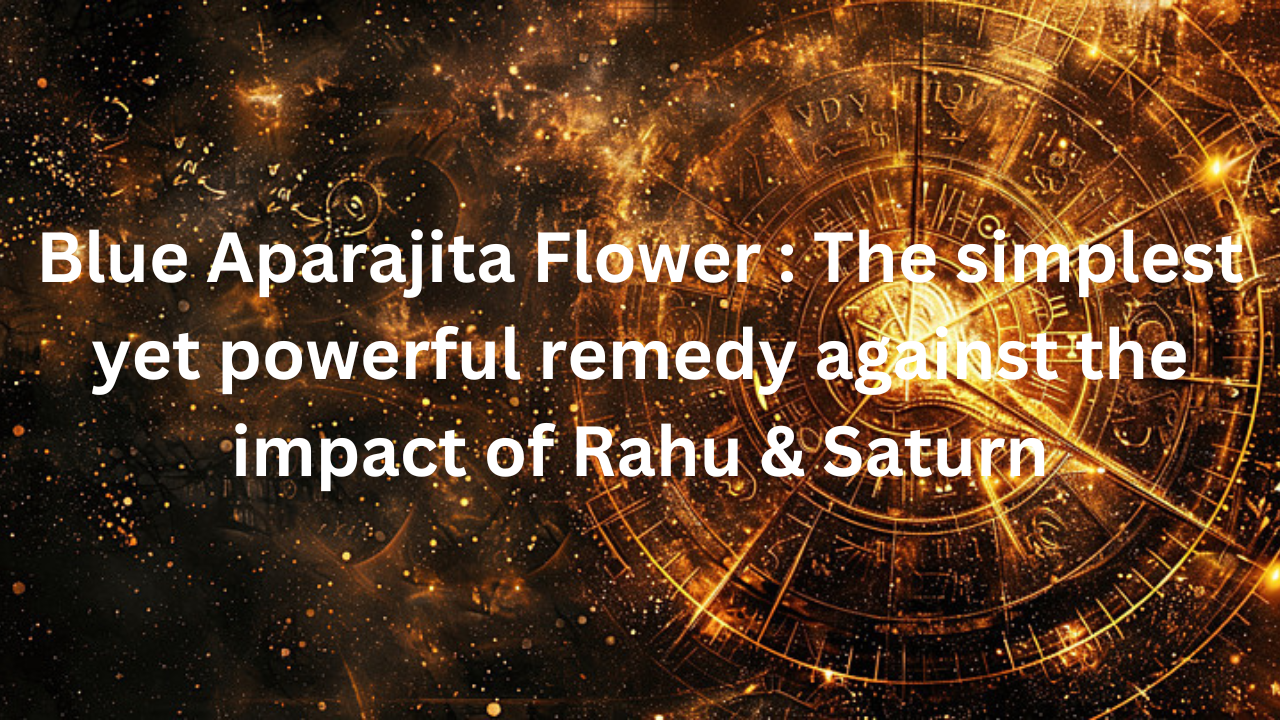
Keeping a Nil Aparajita (Blue Clitoria Ternatea) flower is believed to be an effective remedy against the negative effects of Rahu and Saturn in Vedic astrology. This belief is deeply rooted in the flower’s association with divine energy, its symbolism in Hindu traditions, and its impact on the subtle energies of a person.
Mythological and Spiritual Significance
Sacred to Goddess Durga and Lord Vishnu
The Aparajita flower, especially the blue variant, is sacred in Hinduism. It is often used in worship of Goddess Durga, who represents victory over evil and misfortune. The name “Aparajita” itself means “the undefeated,” signifying its power to remove obstacles.
Connection with Rahu and Saturn
Rahu represents illusions, obsessions, and unpredictable events, while Saturn (Shani) governs discipline, hardships, and karmic results. Both planets, when negatively placed in a horoscope, bring misfortunes, struggles, mental stress, and delays. The Nil Aparajita flower is believed to counteract these effects by enhancing clarity, intuition, and divine
protection.
Astro-Scientific Perspective
Vibrational Energy and Chakras
The blue color of the Nil Aparajita flower resonates with the Ajna (Third Eye) Chakra, which is linked to wisdom and intuition. Rahu, being a shadow planet, often clouds judgment, while Saturn enforces karmic lessons through hardships. Keeping the flower helps balance the energies of these planets, clearing confusion and fostering mental stability.
Pacifying Saturn’s Harshness
Saturn is a strict taskmaster, and its negative influence causes prolonged suffering. Nil Aparajita, associated with the calming energies of Vishnu and Durga, is believed to reduce unnecessary hardships and provide strength to endure challenges.
Remedy and Ritual Usage
Carrying the Flower
Keeping a dried or fresh Nil Aparajita flower in one’s pocket, purse, or near one’s workspace is believed to create an aura of protection against Rahu’s illusions and Saturn’s tough karmic lessons.
Offering to Deities
Placing Nil Aparajita flowers at the feet of Lord Vishnu, Goddess Durga, or Lord Shiva helps attract divine blessings.
Chanting Rahu Beej Mantra (“Om Bhram Bhreem Bhraum Sah Rahave Namah”) or Shani Beej Mantra (“Om Sham Shanicharaya Namah”) while offering the flower amplifies its effect.
Keeping It at Home
Placing the flower near the main door or in the puja room prevents negative energy from entering the house.
Some people mix the flower in Ganga Jal and sprinkle it around the home for cleansing.
Psychological and Energetic Benefits
- The deep blue color of the Nil Aparajita represents peace, spiritual awareness, and protection.
- It helps reduce anxiety, restlessness, and confusion caused by Rahu’s malefic influence.
- Saturn, when negatively placed, leads to depression and delays—keeping the flower is said to provide mental strength and patience.
Additional Benefits
- The flower is used in Ayurveda for enhancing memory, reducing stress, and improving focus—attributes that directly counteract Rahu’s and Saturn’s effects.
- It is also a well-known antioxidant and brain booster, making it beneficial for maintaining mental clarity.
Conclusion
Keeping a Nil Aparajita flower is considered a simple yet powerful remedy in astrology to neutralize Rahu’s deceptive influence and Saturn’s rigid karmic hardships. Whether used as a talisman, an offering, or a part of rituals, it serves as a medium to attract divine grace, mental peace, and resilience against life’s challenges.








